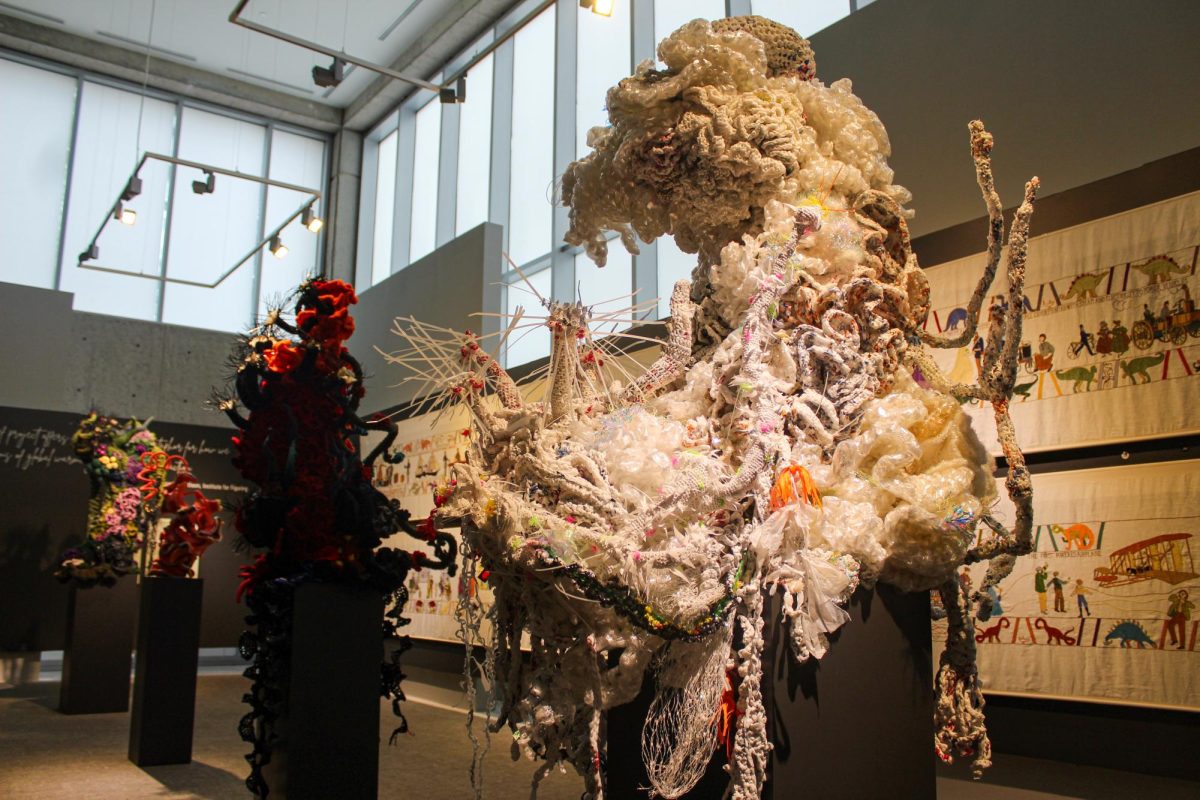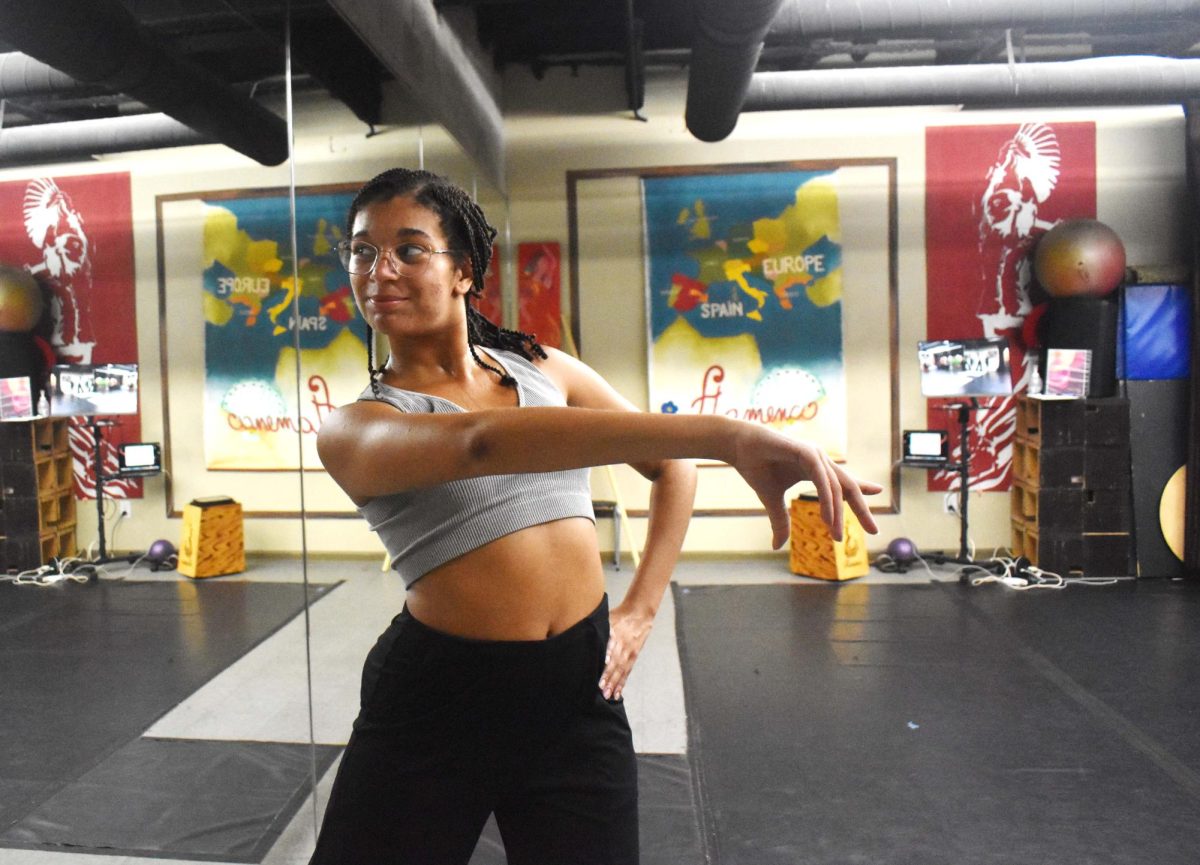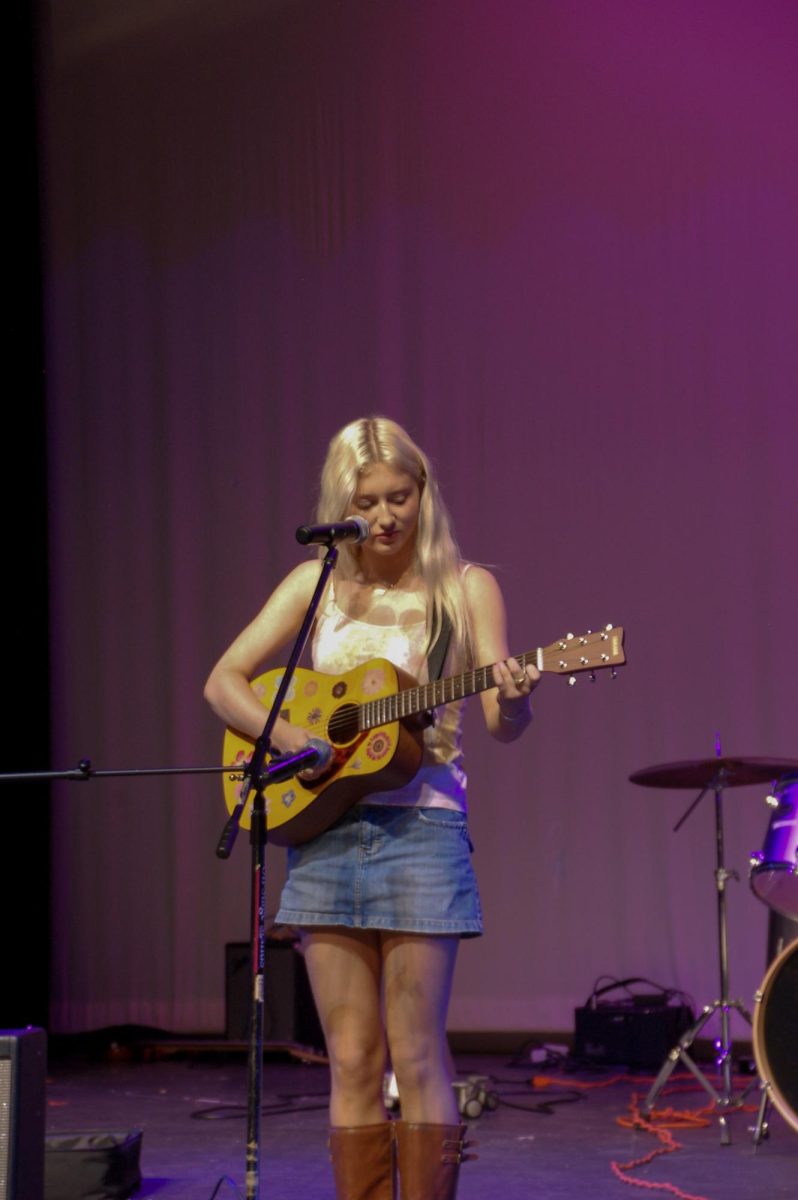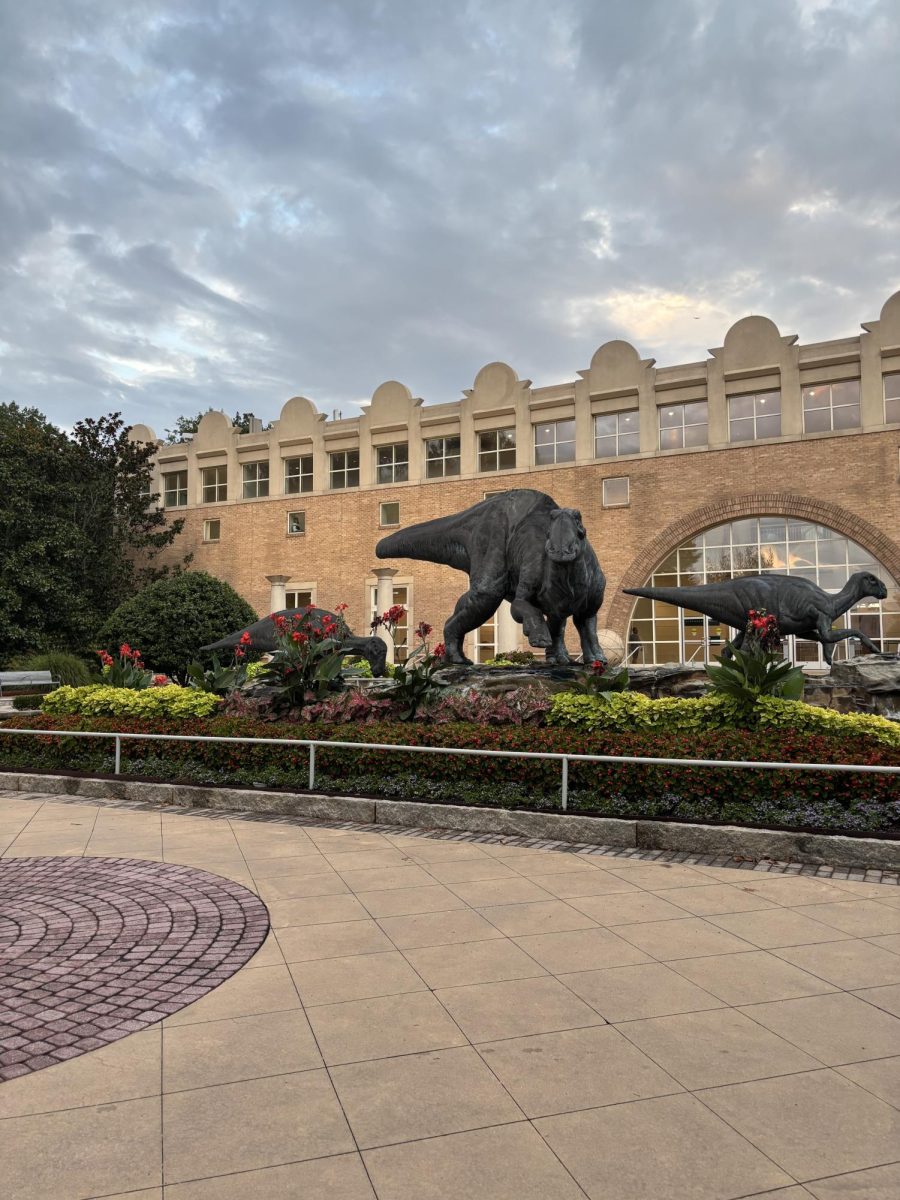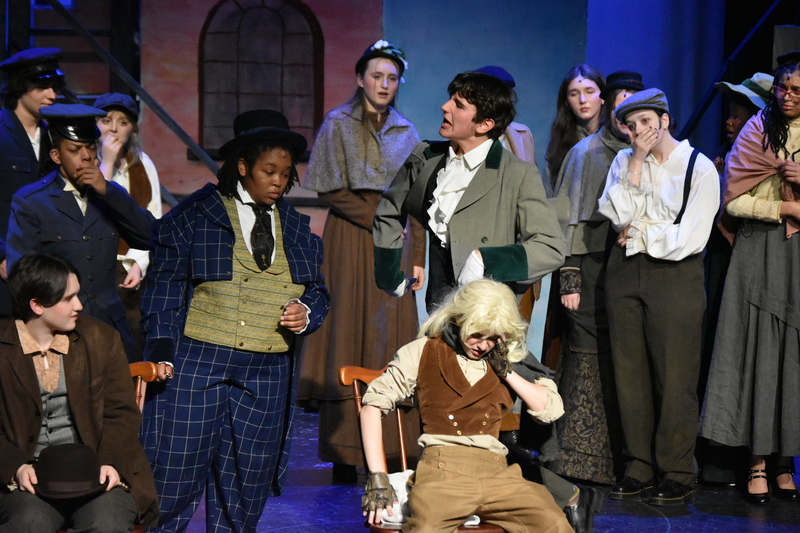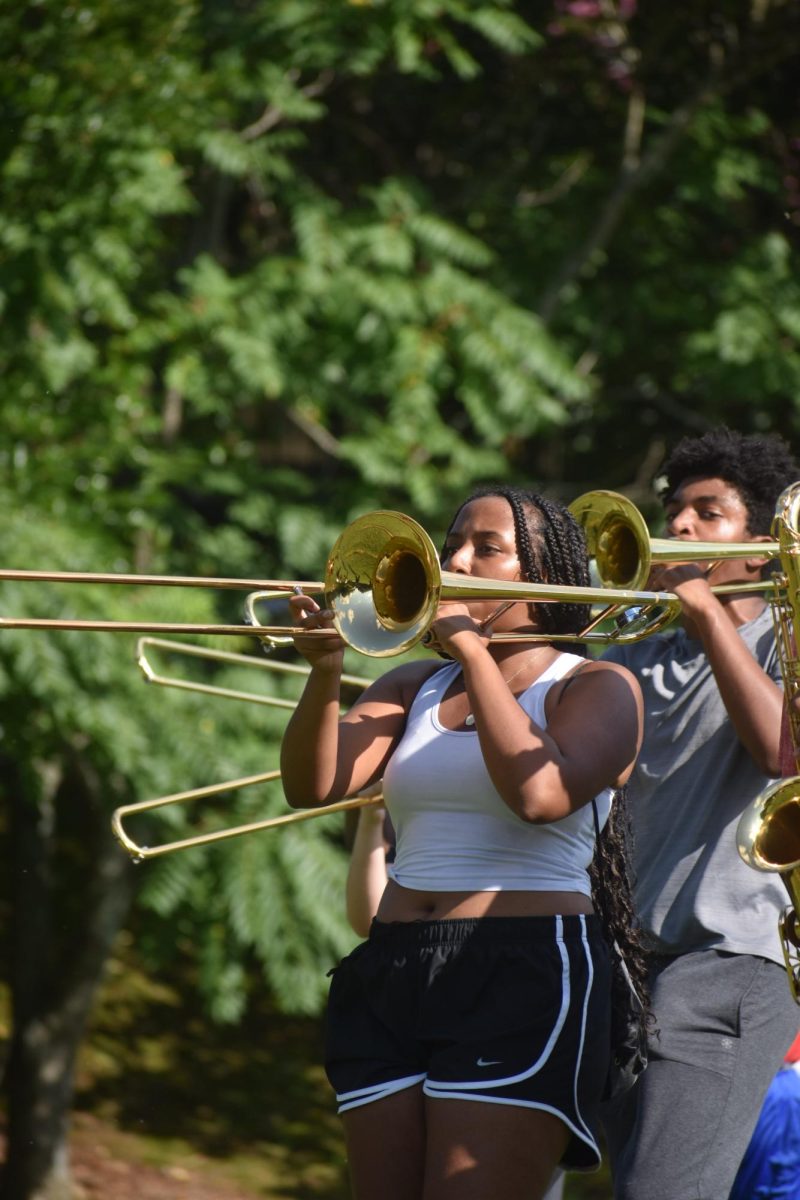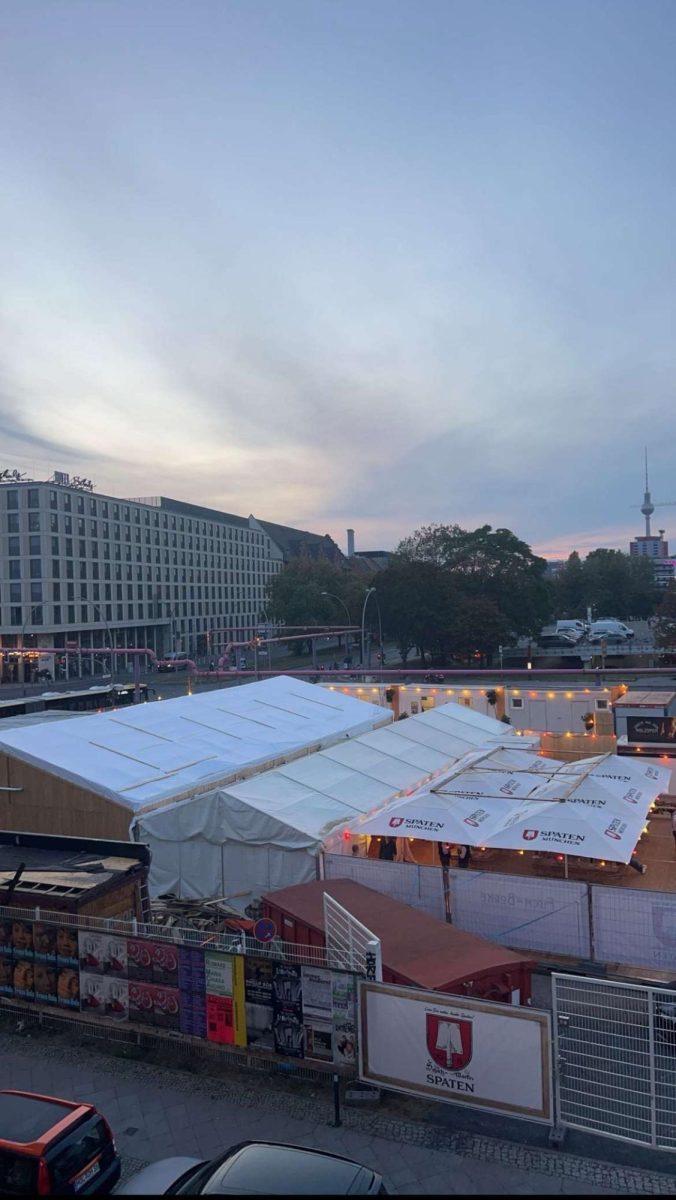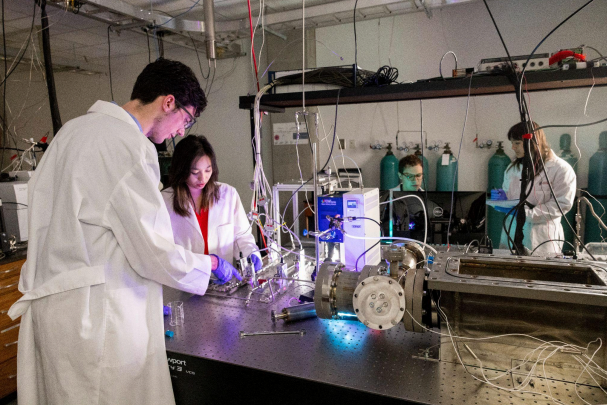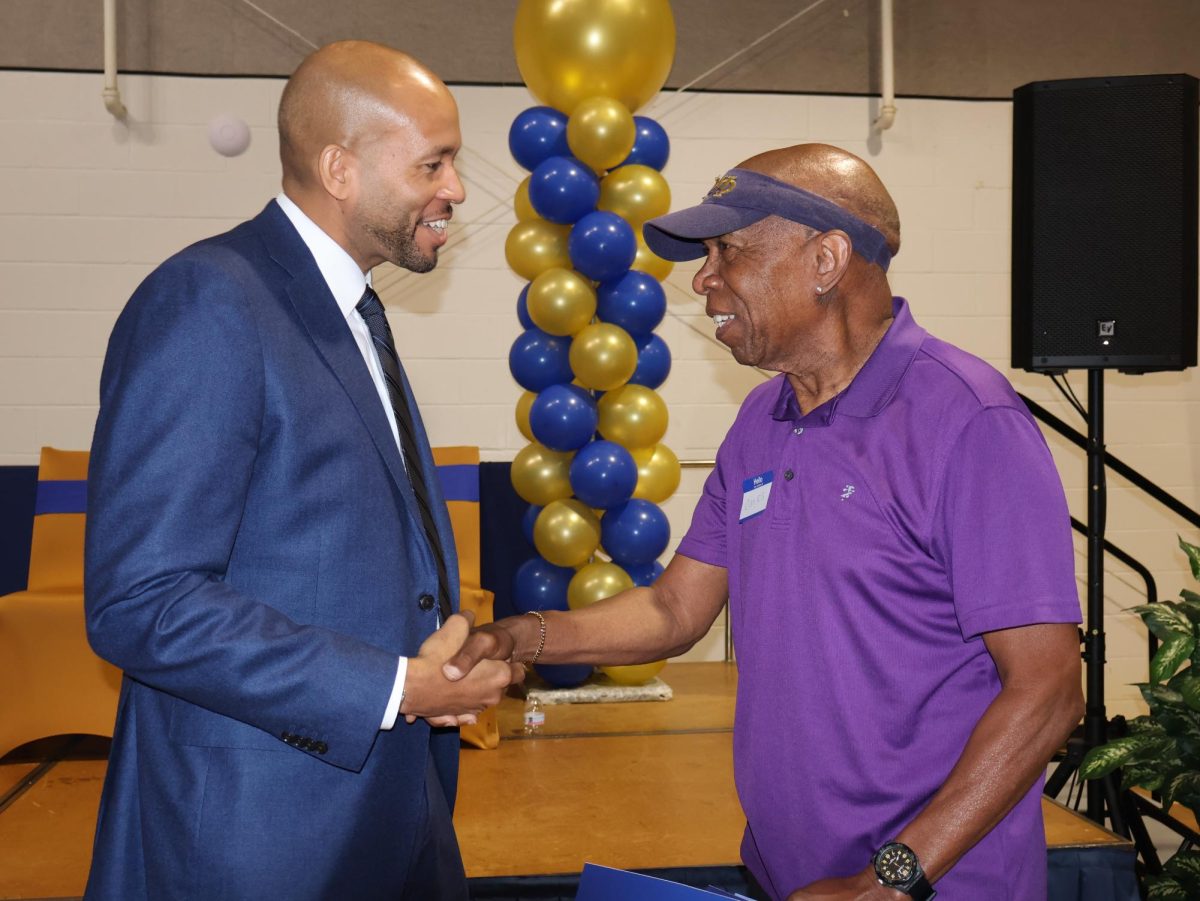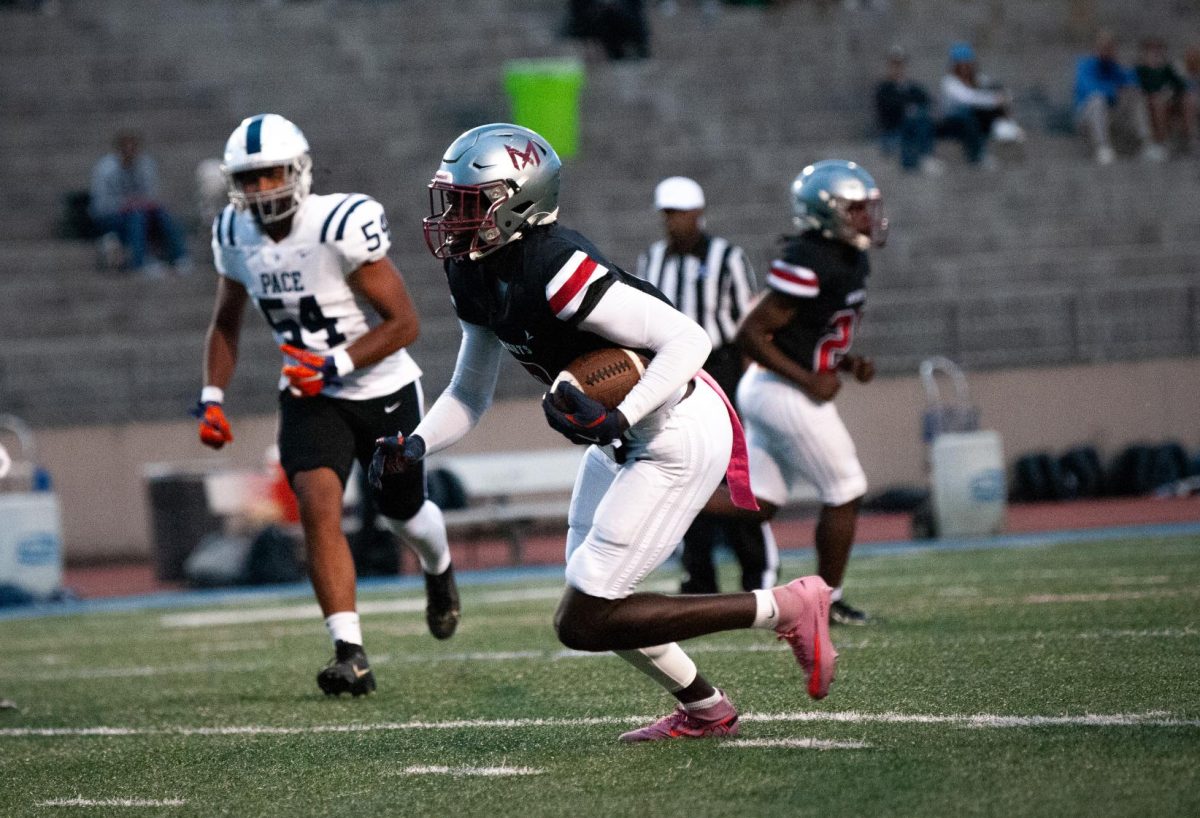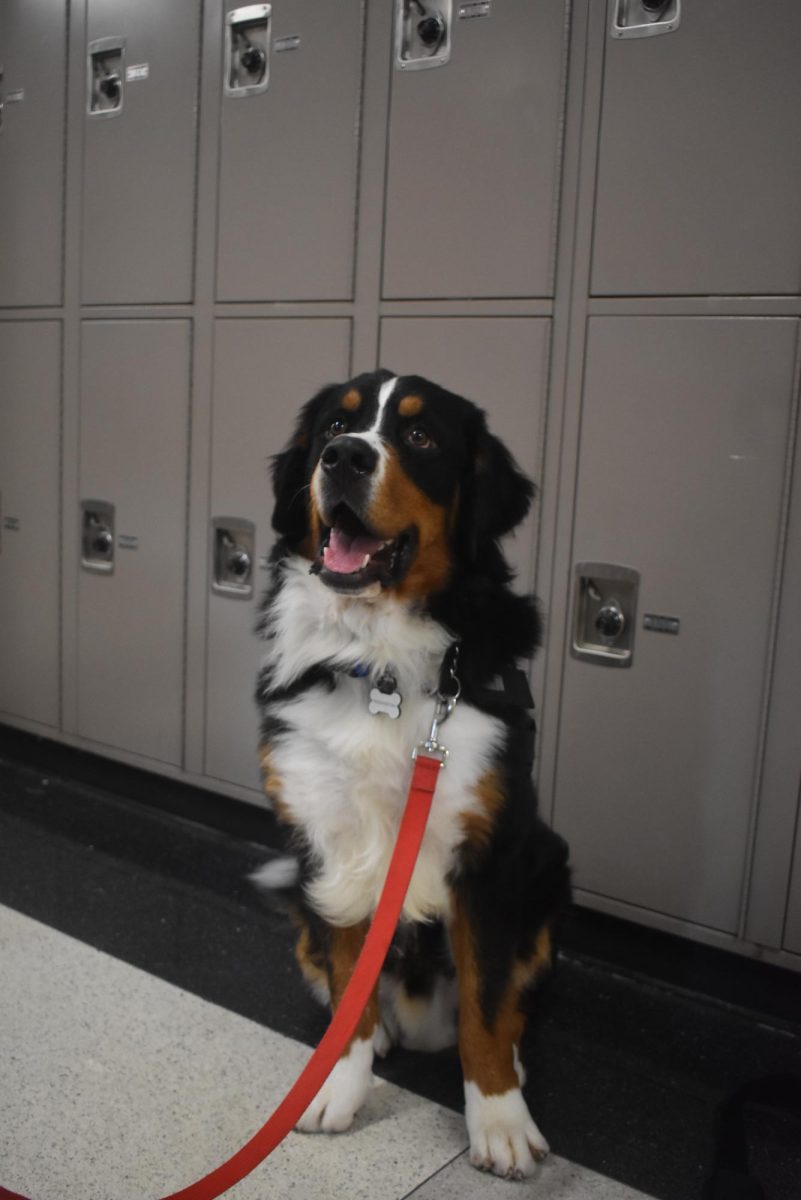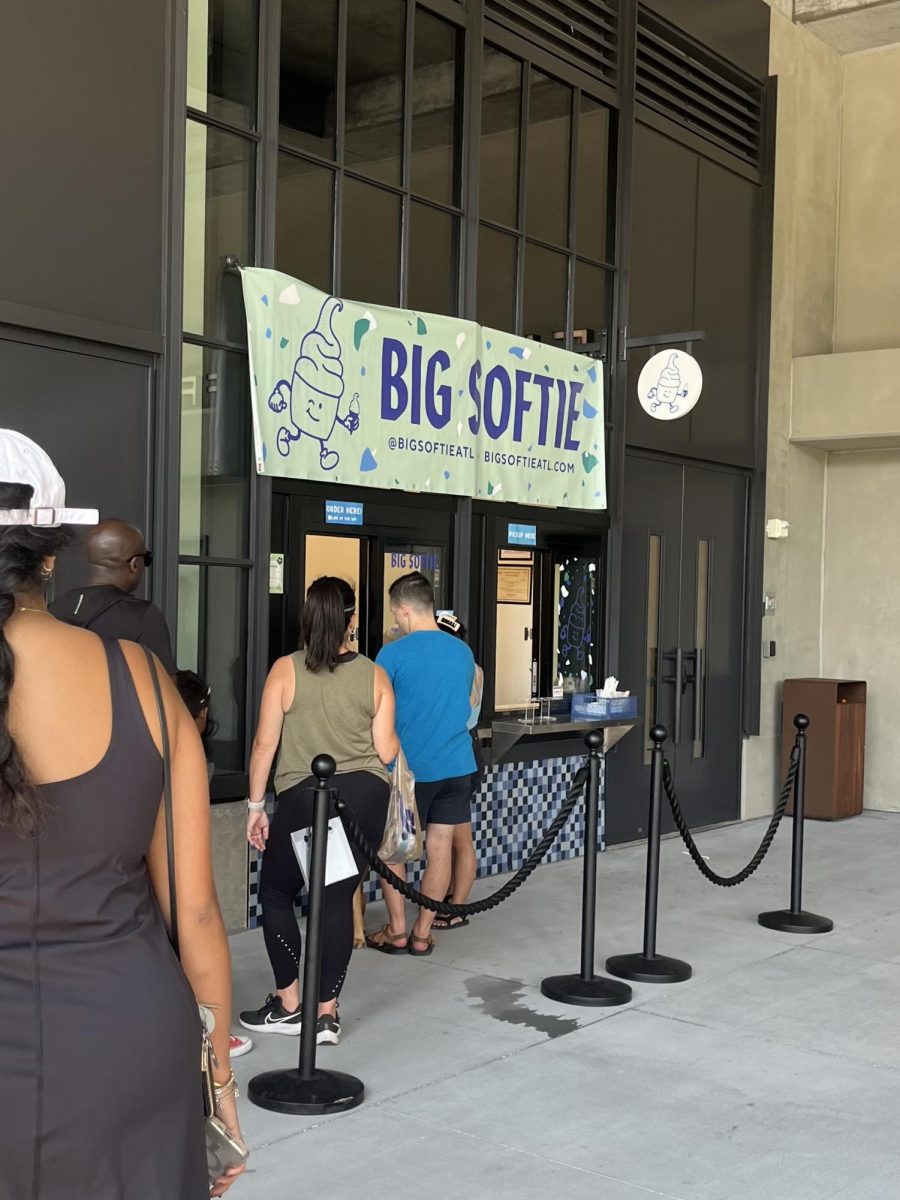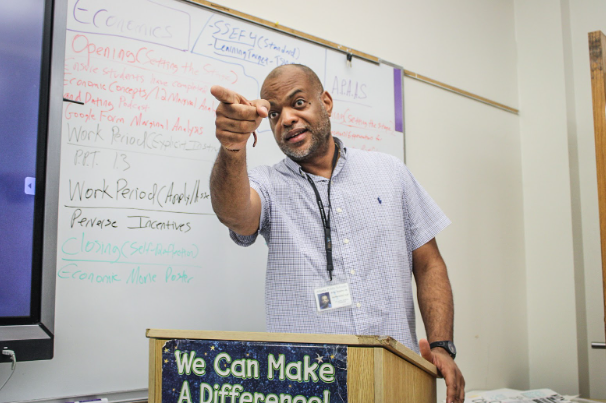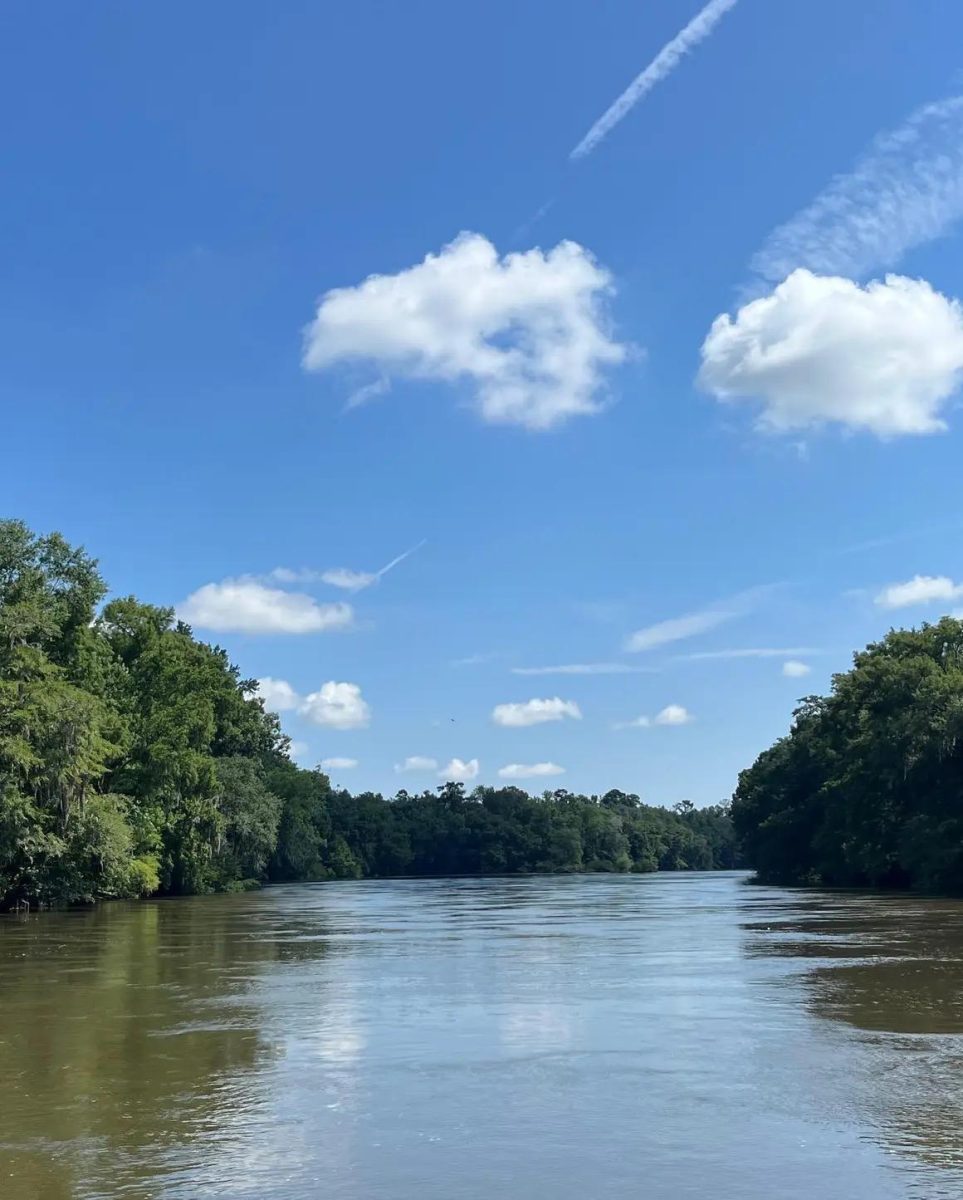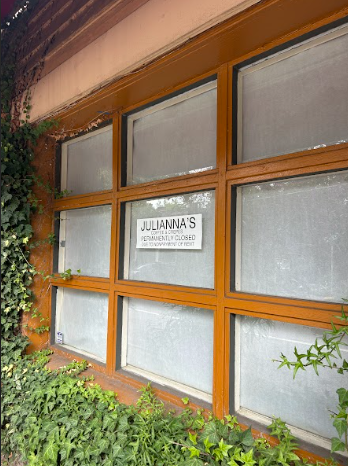In an attempt to bring scientific data to life, the Museum of Design Atlanta (MODA) opens its doors to the community to learn about environmental issues in its new exhibit, “Threads of Change: Design and Data.”
Until May 25, MODA will be featuring various textile and fiber art that challenge traditional perspectives about the reasoning behind ecological problems we face. Executive Director Laura Flushe and Exhibition Designer Susan Sanders curated “Threads of Change,” seeking out different pieces to showcase how artists are telling stories about environmental issues.
“I think when you can invite people and design a space to contemplate how questions of data and design can come together, then [visitors] automatically begin to ask those questions outside of that space,” Felicia Gail, public programming and membership manager, said. “I think by using recognizable and tactile materials such as yarn or recycled materials that people can connect with that, and I think they can begin to bring together these two ideas of art and design.”
With a goal of making environmental issues visual, Judith Rios, graphic designer and brand strategist said she hopes to open visitors’ perspectives and widen their understanding.
“I think it gets [visitors] thinking about it more,” Rios said. “I think sometimes looking at just a chart, it can feel very cold, but seeing something that looks like it’s in motion makes you reconsider the impacts of these things.”
Nathalie Miebach, artist of “Chutes and Ladders, Singing Sailors, 3 Cranes and Restless” said her exploration of data-driven sculptures inspired by meteorology, ecology and oceanography creates a visual for visitors to understand complex scientific systems, following the exhibit’s aspiration of empowering change.
“The power of art is that it gives audiences different kinds of entry points into the discussion of climate change that’s so often discussed either through the scientific lens or political rhetoric,” Miebach said. “It enables a more nuanced vocabulary to arise in which human experiences, emotions and the sometimes absurd responses we have to our changing planet have space to exist.”
Four different structures created by Miebach are featured in “Threads of Change.” As a basket weaver interested in storm data, Miebach’s piece “3 Cranes” explores the devastating 2012 Hurricane Sandy, incorporating wind speed, temperature changes and wave height into a ferris wheel structure to visualize the way it might feel when you’re in a storm.
“I think of my pieces as visual storytelling devices that try to tell both the scientific story of a weather event, as well as explore through colors, shape and metaphors the complicated human responses that ensue,” Miebach said. “Every extreme weather event has at least two narratives. The first is scientific, made up of temperature, wind and pressure gradients that generate energies to build these storms and propel them forward. The second is made up of human experiences, both during and long after the storms have left … I believe we need both types of narratives if we are to come to terms with climate change and its effects on weather systems.”
As a quilter and artist herself, Kimani Johnson, public programming and communications assistant, has noticed visitors engage with the art, as well as, found herself learning with each new exhibit MODA features.
“I think this exhibit is getting people to think about what we can do to fight climate change, about consumption, about how we work together,” Johnson said. “I think also to Nathalie [Miebach’s] work, that’s more about the results of climate change and how storms can seem fun, but they’re the total opposite.”
Artist Bonnie Peterson reflects this vision while showcasing “Geoscience Embroideries,” a series of quilts that give visitors a visual of different statistics to represent ocean temperatures rising, glacier melting data and carbon dioxide levels over the past 400,000 years.
“The reason why that artist Bonnie Peterson stitched all of the statistics on the quilts instead of just having them on a chart, per say, is to showcase these statistics in a different light and to put it on softer more approachable materials,” Rios said. “Just asking us to look at these things in a different way.”
The “Crochet Coral Reef” by sisters Margaret and Christine Wertheim is another collection featured in the new exhibit. With Margaret, a renowned science writer, and Christine, a poet, the sisters represent the goal for “Threads of Change,” coming together to create different structures of coral reef art. Their art features a bleached coral reef made out of plastic bags, candy wrappers and other waste products to show the impact these everyday items can have on the environment.
“Not only are [Margaret and Christine Wertheim] using recycled materials and trash, it’s a community-based project, as well, to showcase how humans are affecting coral reefs, but also it incorporates math,” Rios said. “It’s called hyperbolic geometry, and coral reefs have that structure naturally where all the curves and twists that coral reefs have. It wasn’t possible for humans to create that until a crocheter realized they could create naturally through crochet.”
Another monumental feature in this new exhibit includes Sandra Sawatzky’s 220-foot “Black Gold Tapestry,” which charts the history of society’s relationship with oil, featuring 434 dinosaurs, 349 human figures, 88 buildings and more characteristics that make this artwork so elaborate. Rios said this piece serves as her favorite feature in “Threads of Change” with its plentiful details and inviting persona for people of all ages.
“[Sawatzky] created [“Black Gold Tapestry”] over nine years, and it took her over 16,000 hours to create,” Rios said. “That tapestry looks into the story of oil and how oil has affected our climate, our way of living and how it has impacted industries and the world. I think looking into that specific project people can see, for better or for worse, what oil has done, but also can see what someone decided to do with their time and that this beautiful creation came from it.”
Through incorporating engaging activities, such as Adrian Baker’s “Net-Work,” a scavenger hunt and data portrait stations for people to create and hang throughout the exhibit, Rios said guests gain a deeper understanding of the impact design can pave on important issues they care about.
“I think it will open their minds a little bit, but we can only hope at the end of the day that is what is happening,” Rios said. “With every exhibition that MODA brings in we always like to get people involved … In this exhibition, specifically, we have an art piece called ‘Net-Work.’ It is a collaborative art piece that is symbolic of the wood wide web, which is the way that trees and fungi communicate. They share resources and will alert each other if anything dangerous might be happening. We have a knitting and crocheting station in the museum where people can knit their own strands to add to that art piece … I think through doing all of those things, people can take away how this kind of art and this kind of data can make a difference.”
Miebach said she wants her art to evoke engagement that gets visitors thinking beyond the exhibit about the deeper meaning each number represents in her playful designs.
“The sculptures are deliberately built in a way that the viewer has to figure it out like a puzzle,” Miebach said. “They look like toys with lots of numbers. Over time, the metaphors on which the data sits and the larger story reveal themselves. That story could be about a hurricane or flood, but it also addresses questions about the future, such as how do we learn to live with rising sea levels, warmer temperatures, increased and unpredictable rains and increased fire danger.”
Already noticing responses from guests viewing the exhibit, Rios said there’s been a collaborative mixture of people coming to admire the art, diagnosing the deeper meaning behind each stitch.
“One thing I will say about this exhibition that I think has been really interesting to see is that we’ve had the knitting, crocheters and embroiderers come out to see it, but we’ve also had some scientists come to see it, as well,” Rios said. “I think it’s reaching two different communities beyond just people who are interested in museums, art and design. I think it’s been really cool to see how people are interacting with this space.”
Miebach describes her artwork as a bridge between the two fields of design and data, helping form connections with seemingly distant issues.
“I don’t build these pieces with the intent of Change with a capital ‘C,’” Miebach said. “I don’t have a specific idea of what action I am trying to wake up in people … The pieces are built foremost to help me understand something I have a really hard time wrapping my head around, which is climate change. They are built in a way to reveal the complexity of scientific systems interacting with each other to create weather, as well as, helping me make sense of how we are responding to them. Rather than expecting the pieces to evoke a specific kind of change, I think of them more as creating spaces in which a viewer’s own experiences with weather and questions can come up.”
Although not as commonly showcased in a similar way as MODA presents with “Threads of Change,” Gail said there’s no limit to artists creating engaging environmental pieces or people interested in learning from the art.
“You don’t often see so many of these particular artists, who are all women in this particular case, have such a place to be showcased all at once in an intimate setting such as this in the middle of Midtown,” Gail said. “That’s not to say that those artists don’t exist. They’re out there; there’s so many. Even as far as scheduling public programs, I’ve had no shortage of people interested in that work in this way and consider these ideas.”
Whether it’s the outer structure of the “Knitted Brain” or the sound installation capturing voices of the Ivory-billed Woodpecker, the Cozumel Thrasher or other extinct species humans will never be able to hear in the wild again, Rios said “Threads of Change” has the potential to shift perspectives and empower visitors.
“I think that this [exhibit] can impact the community by bringing awareness to different things, but I think also with this exhibition, so far, what we’ve seen [is] it’s permitting a voice for different groups of people,” Rios said. “Fiber art, knitting, crocheting, embroidering, etc. has historically been a women-based art form. Oftentimes, it’s older women that are doing it now, not that it’s only them. I think that it’s been a very empowering thing for these people and these groups of people to see this kind of artwork being featured in an exhibition. Also, just seeing this scale of it, too. I think that for students and for younger people, it’s empowering to see what you can do with your own hands and also how you can communicate things that you believe in through design.”

